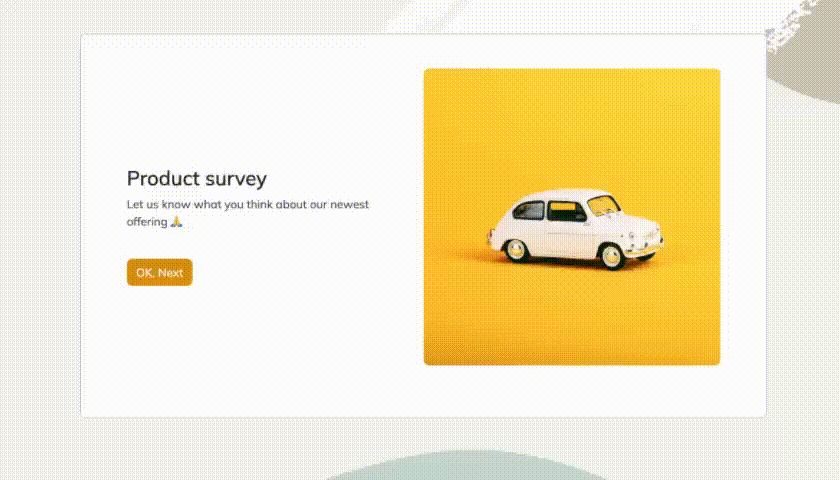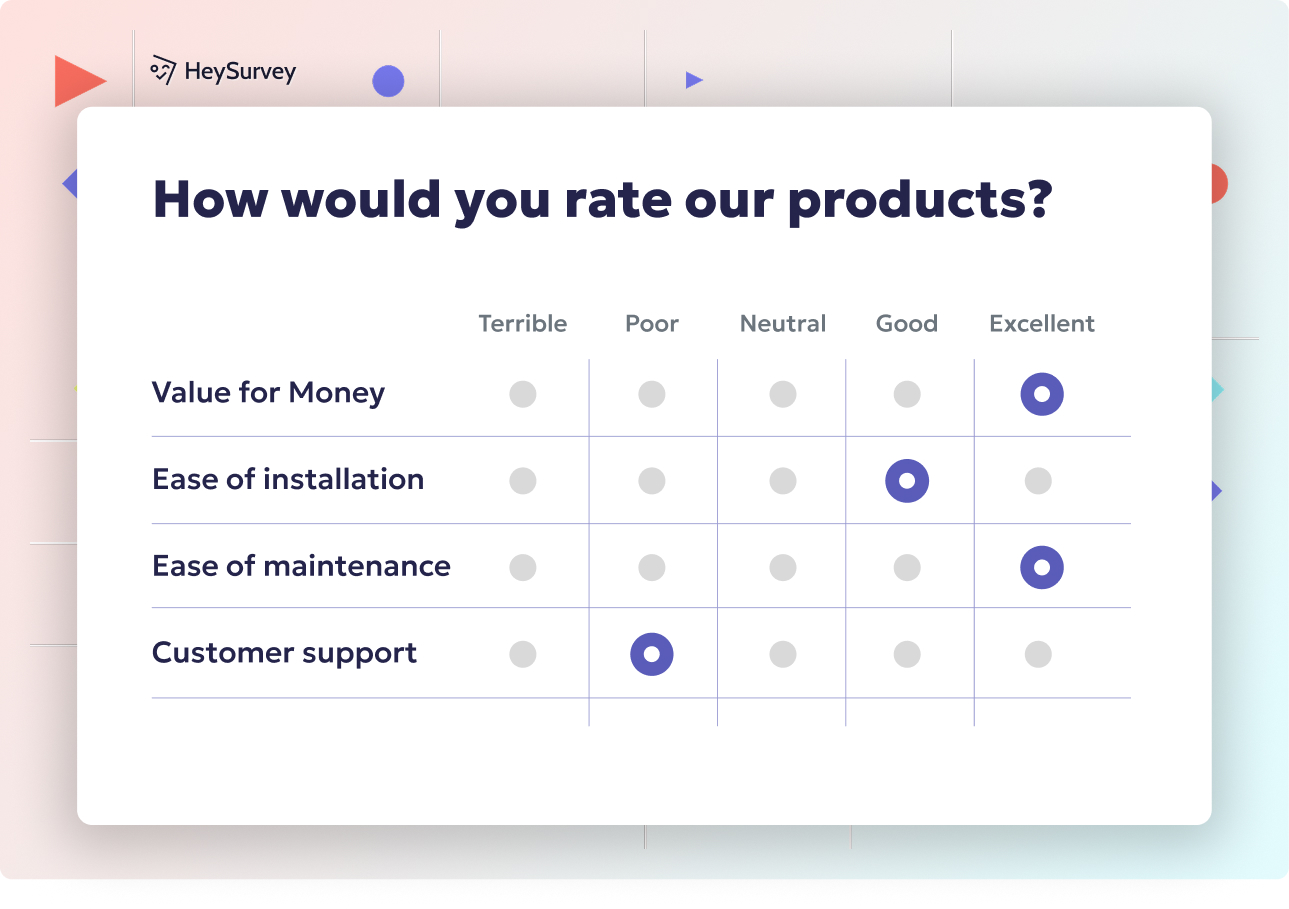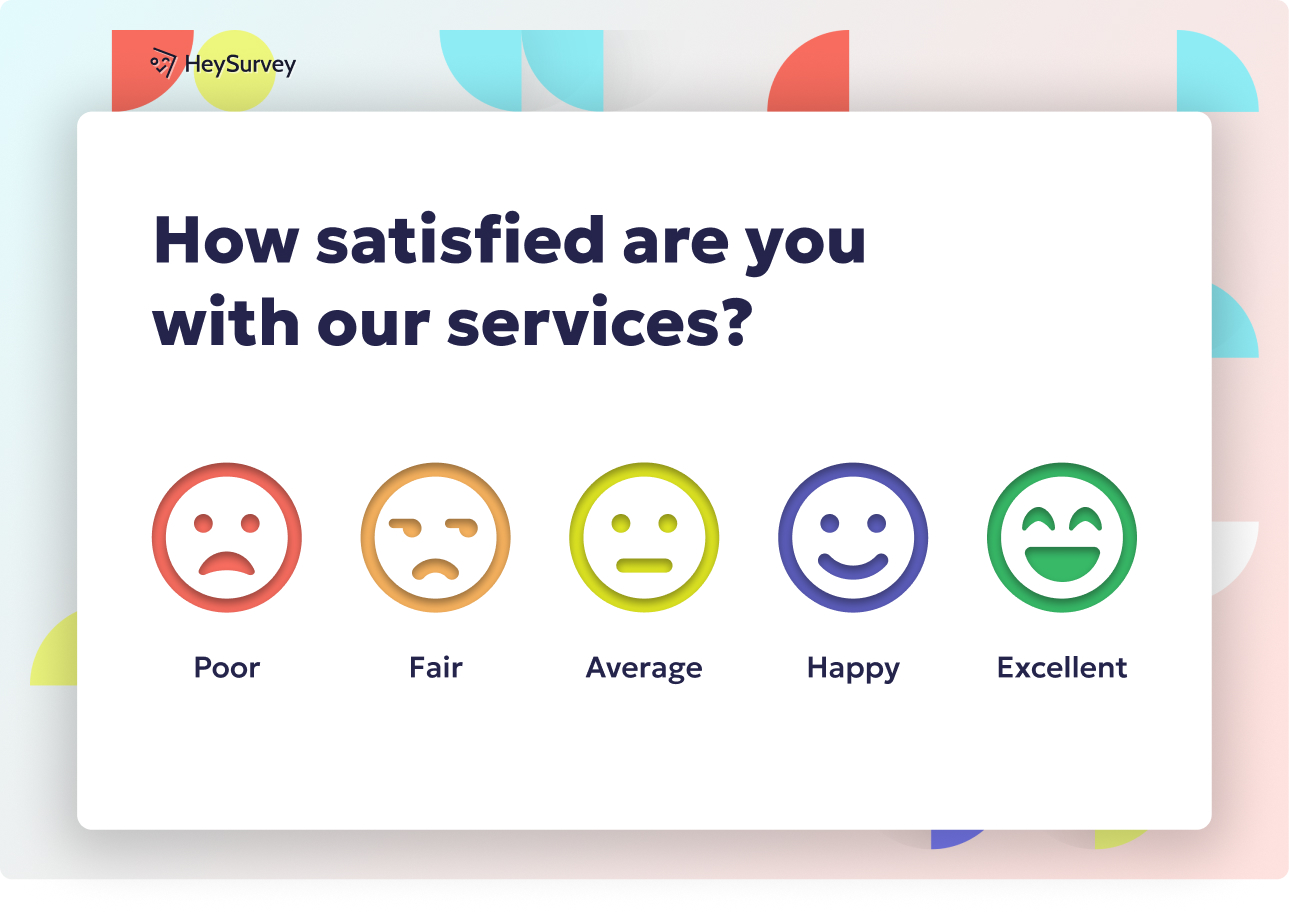29 Transportation Survey Questions: Types, Uses & Examples
Explore 30 proven transportation survey questions across 7 types to optimize transit, commuting, freight, and micromobility insights.
Transportation surveys are essential tools for understanding and improving the myriad ways people and goods move within urban environments. As cities grow and evolve, so do the complexities of commuting, freight logistics, and the adoption of new mobility solutions. By gathering data through targeted surveys, planners, employers, transit agencies, and private operators can make informed decisions to optimize routes, budgets, and overall rider experiences.
Commuter Satisfaction Surveys
Commuter satisfaction surveys are designed to assess daily riders' contentment with their regular commutes, whether by bus, rail, carpool, or other modes. Understanding these satisfaction levels is crucial for identifying areas needing improvement and ensuring that transportation services meet the needs of their users.
Why & When to Use:
Post-Implementation of New Timetable: After introducing a new schedule, it's vital to gauge how well it aligns with commuters' expectations and needs.
Recurring Quarterly Pulse Checks: Regular assessments help track changes in satisfaction over time and identify emerging issues.
Before Major Infrastructure Upgrades: Gathering baseline satisfaction data before significant changes allows for a clear comparison of improvements post-upgrade.
5 Sample Questions:
How reliable do you find your daily commute?
Are you satisfied with the wait times at your primary transit stop?
How would you rate the cleanliness of your usual mode of transportation?
Do you feel safe during your commute, both during the day and at night?
Which communication channels do you prefer for receiving updates about service changes?
Public Transit Usage Surveys
Public transit usage surveys aim to understand ridership habits and the barriers individuals face when using buses, subways, and light rail systems. This information is invaluable for transit agencies looking to enhance service offerings and attract a broader user base.
Why & When to Use:
Before Fare Restructuring: Assessing current usage patterns helps predict how fare changes might impact ridership.
During Transit Marketing Campaigns: Understanding existing habits aids in crafting targeted campaigns to boost usage.
After Service Disruptions: Evaluating how disruptions affect ridership can inform recovery strategies.
5 Sample Questions:
How often do you use public transit in a typical week?
What is your preferred method for purchasing transit tickets or passes?
What factors discourage you from using public transit more frequently?
How accessible do you find transit services in terms of physical infrastructure?
What improvements would encourage you to use public transit more often?
Corporate Travel & Commuter Benefit Surveys
These surveys help employers refine commuter benefit programs, such as shuttles, parking subsidies, bike allowances, and remote-work policies. By understanding employee preferences and needs, companies can enhance satisfaction and retention.
Why & When to Use:
Onboarding: Introducing new employees to available benefits and gathering their preferences.
Annual Benefits Review: Assessing the effectiveness and relevance of current programs.
Office Relocation Planning: Understanding commuting challenges to choose optimal office locations.
5 Sample Questions:
What is your primary mode of transportation to work?
Would you utilize an employer-provided shuttle service if available?
If offered a transportation stipend, would you consider switching your current commute method?
How often do you work remotely, and would additional remote-work options influence your commute choices?
Do you feel the current parking allocation is fair and meets your needs?
Last-Mile Connectivity Surveys
These surveys identify gaps between transit stops and final destinations, aiming to improve walkability, shuttle loops, or micromobility options. Enhancing last-mile connectivity is crucial for ensuring seamless travel experiences.
Why & When to Use:
Planning Transit-Oriented Development (TOD) Projects: Ensuring developments are well-connected to transit hubs.
Evaluating New Shuttle Pilots: Assessing the effectiveness of new shuttle services in bridging connectivity gaps.
Community Feedback on Sidewalk Upgrades: Gathering input to prioritize infrastructure improvements.
5 Sample Questions:
How far is your home from the nearest transit stop?
Do you feel safe walking from the transit stop to your destination?
Which mode of transportation do you prefer for the last mile of your journey?
On average, how much time do you spend on the last mile of your commute?
What infrastructure improvements would make your last-mile journey more convenient?
Freight & Logistics Stakeholder Surveys
These surveys collect feedback from truck drivers, warehouse managers, and logistics coordinators about freight corridors and loading zones. The insights help in optimizing supply chains and addressing operational challenges.
Why & When to Use:
Prior to Revising Truck Routes: Understanding current challenges to inform route planning.
Implementing Low-Emission Zones: Assessing potential impacts on logistics operations.
Drafting Freight Master Plans: Gathering data to inform long-term logistics strategies.
5 Sample Questions:
What is the average delay you experience during deliveries?
Which areas do you identify as major congestion points in your delivery routes?
How satisfied are you with the accessibility of loading zones?
What technologies (e.g., telematics, electronic proof of delivery) have you adopted in your operations?
What suggestions do you have for improving current delivery routes?
Micro-Mobility Adoption Surveys (E-Scooters & Bike-Share)
These surveys measure public interest, safety perceptions, and usage frequency of shared bikes and scooters. Understanding these factors is key to promoting sustainable urban mobility solutions.
Why & When to Use:
Launching or Expanding Micromobility Fleets: Assessing potential demand and user preferences.
Evaluating Pilot Zones: Determining the success and areas for improvement in trial areas.
Seasonal Demand Assessments: Understanding usage patterns to optimize fleet deployment.
5 Sample Questions:
What is the primary purpose of your trips using shared bikes or scooters?
How comfortable are you sharing bike lanes with motor vehicles?
What factors deter you from using micromobility options more frequently?
Which pricing model do you find most appealing for micromobility services?
How does weather influence your decision to use shared bikes or scooters?
Post-Trip Experience Surveys (Ride-Hailing & Taxi)
These surveys capture feedback immediately after a ride to improve driver performance and platform features. Real-time insights are invaluable for enhancing service quality.
Why & When to Use:
Automatically After Each Completed Ride: Ensuring timely and relevant feedback collection.
During Service Quality Audits: Assessing adherence to service standards.
Ahead of Loyalty Program Rollouts: Understanding user satisfaction to tailor reward systems.
5 Sample Questions:
How would you rate your overall experience with this ride?
Were you satisfied with the wait time for your ride?
How professional was your driver during the trip?
How would you rate the cleanliness of the vehicle?
Would you recommend this ride-hailing service to others?
Dos and Don’ts for Crafting Transportation Survey Questions
Creating effective survey questions is an art. Here are some best practices to guide you:
Do: Keep questions mode-agnostic when comparing options; avoid overloading with jargon.
Don’t: Overwhelm respondents with lengthy surveys; ensure a mobile-friendly design.
Do: Pilot test for clarity; avoid leading respondents with biased wording.
Don’t: Ignore the importance of anonymity; assure respondents their feedback is confidential.
By adhering to these guidelines, you can craft surveys that yield valuable insights, driving improvements in transportation systems and services
Creating a transportation survey with HeySurvey is a breeze, even if you’re new to the platform. Here are 3 easy steps to get you rolling:
Step 1: Create a New Survey
Start by logging into HeySurvey (or just start without an account) and hit the Create New Survey button. You can pick a template tailored for transportation surveys or choose a blank one if you want total freedom. Give your survey a clear name, like “Commuter Satisfaction Q2 2024,” so you can find it later without hunting around.
Step 2: Add Questions
Next, fill your survey with the right questions. Click Add Question to select from many types such as multiple choice, scale, or text input. You can copy the sample questions from the article directly. Customize each question’s text, set them as required if you must, and toss in some images for fun or clarity. Don’t forget — with HeySurvey, you can also use branching to guide respondents through different questions based on their answers, tailoring the experience perfectly.
Step 3: Publish Your Survey
Once happy, hit Preview to see how your survey looks across devices — desktop, tablet, or mobile. Tweak colors or fonts in the Designer Sidebar if you want it to match your branding. When ready, click Publish to get your unique sharing link. You’ll need to create an account if you haven’t already, but then you can start collecting responses and dive into your results anytime.
Bonus Steps to Make Your Survey Shine
- Apply Branding: Add your logo and adjust colors to keep your survey on brand. This neat touch builds trust and looks professional.
- Define Survey Settings: Set start/end dates, response limits, or a redirect URL after completion — all in the Settings Panel.
- Use Branching or Skip Logic: Customize the path respondents take by directing them to specific questions or endings based on previous responses. This way, every answer counts and feels personal.
If you want a head start, simply open one of HeySurvey’s ready-made templates below the instructions and tweak from there — easy as pie!
For more detailed tips, check out HeySurvey’s official guide to become a survey pro in no time.
Related Feedback Survey Surveys

25 Catering Survey Questions to Collect Actionable Feedback
Discover 30 expert catering survey questions to gather actionable feedback that enhances menus, s...

30 User Feedback Survey Questions for Better Insights
Discover 40+ user feedback survey questions across 8 types to boost product insights, UX, and cus...

30+ Environment Survey Questions for Sustainable Insights
Explore 30+ environment survey questions with expert tips covering awareness, behavior, corporate...